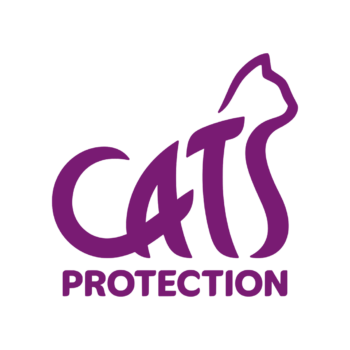Cats Protection is the UK’s largest feline welfare charity, helping 200,000 cats and kittens every year. Its vision is to create a world where every cat is treated with kindness. It does this by educating the public, campaigning for policy change, rescuing and fostering cats, rehoming them and more.
Tony Gamble doesn’t have any cats at home, but he cares for plenty of them at work — even if it’s indirectly. As Head of IT at Cats Protection, his job is to keep technology running for 37 adoption centres and 230 volunteer-run branches across the UK, helping them to find homes for thousands of cats every year. And though most of his work happens behind the scenes, it has a big impact on Cats Protection, the cats it rescues and the people who adopt them.
For the past few years, Gamble has been busy helping Cats Protection go digital by rethinking the backend architecture, introducing cloud-based collaboration tools such as Microsoft Teams and reducing the amount of paper that flows through the charity. The digital transformation has proceeded gradually, increasing efficiency for nearly 1,000 staff and 11,000 volunteers as they rescue and rehome thousands of cats and educate the public on how to care for them properly. But when the COVID-19 pandemic hit, the initiative accelerated.
“When the UK went into lockdown, our adoption centres closed to the public, but they were still full of cats in need of rehoming,” Gamble says. “We had to keep adoptions moving forward, even though people couldn’t come in to meet the cats and fill in paperwork in person.”
Cats Protection started calling it ‘Hands-Free Homing’. People interested in adopting a cat could look at the listings online, but the organisation needed to make sure the fit was right. Adoption centres started recording videos of the cats and their interactions with staff, sending them to people who expressed an interest. Instead of simply looking at photos, people could visualise the cat in their homes, with their families and other pets — and avoid surprises that could lead them to return the animal.
It was a solid start, but Cats Protection had to think about the whole adoption experience, from the moment someone enquires about a cat to the moment they take it home.
This experience included a lot of paperwork. If paperwork was too slow or cumbersome, adoptions would dwindle, keeping cats from finding their forever homes and leaving less room for new rescues. If it felt too mechanical and impersonal, it would remove all the excitement of welcoming a new pet into the family. Another factor? Adoption centres are managed by a mix of staff and volunteers, many of whom work only one shift per week. The handoff among staff and volunteers had to be seamless.
Smoother adoptions with Adobe Sign mean cats find their forever homes sooner
The job of creating e-signature capabilities for the Hands-Free Homing process fell to Helen Waterman, IT Project and Documentation Officer at Cats Protection. She has extensive experience with technology implementation and, perhaps just as important, three cats. That gives her insight into the emotional weight of the adoption process and the importance of keeping paperwork simple.
“When people decide to adopt, they want to bring their new family member home as soon as possible,” Waterman says. “We chose Adobe Sign to enable e-signatures and make it possible to do all the paperwork online instead of sending it back and forth through the post — so cats can get into their forever homes faster.”
Waterman kept in touch to long-time technology partner Phoenix Software for help rolling out Adobe Sign, starting with a small pilot group of adoption centres in April 2020. Just five months later, all 37 centres were using Adobe Sign for adoption documents, which include the bill of adoption, terms of business, the cat’s medical summary and pet insurance form. That enables staff, volunteers, and pet owners to minimise the amount of contact they have with each other — meeting only briefly to transfer the cat to its new family.
Each adoption centre has its own shared group within Adobe Sign, which allows staff and volunteers to keep adoptions flowing smoothly even as individuals cycle in and out of their shifts. That means documents that would have taken two weeks to finalise are now completed in an average of 2.5 hours. Not only is that good for the cats and their new families, it also gives Cats Protection more space to accept emergency cases, including animals whose owners passed away unexpectedly.
By October, Cats Protection had found homes for more than 9,000 cats, with over 5,000 of those adoptions managed through the Hands-Free Homing process. And the organisation had kept the quality of its matches high, making sure the new owners were a good fit for the cats.
“The well-being of cats is our number one priority, and we want to make sure they go to the right homes,” says Waterman. “With Hands-Free Homing, we’ve been able to help people choose cats that are a better fit for their lifestyles and expectations — rather than relying on the emotional reaction people have when they walk into a room of 40 fluffy kittens. That has helped keep return rates down.”
Working toward a world where every cat is treated with kindness
For Cats Protection, Adobe Sign represents an unexpected, but welcome, acceleration of its digital strategy, which Gamble was planning to roll out gradually. The quick adoption of e-signatures has helped the organisation meet many of its goals much sooner than expected, reducing paper, making staff and volunteers more mobile, moving to the cloud, and enabling remote collaboration. With the help of Adobe Sign, Cats Protection has been able to continue moving the charity forward, working toward the goal of a better world for cats – despite the challenges presented by COVID-19.
“By laying those foundations early, we were in a much better position to cope with the pandemic than many charities,” says Gamble. “The fact that we were able to roll out Hands-Free Homing so quickly and successfully – with technologies such as Adobe Sign – is something to celebrate.”
Adobe Sign filled the immediate need for e-signatures on adoption paperwork, but its impact is already spreading. With a reliable audit trail of every adoption in a single repository, Cats Protection has improved its compliance with legal and insurance requirements. Staff members can access adoption documents instantly and see exactly where they are in the process, which significantly reduces the administrative burden. Plus, e-signatures help Cats Protection reduce its paper use and shrink its carbon footprint.
Now, Cats Protection has begun to roll out Adobe Sign as well to other departments beyond adoption, including procurement, legal, information governance, and veterinarians in the field. Plans are in the works to extend e-signatures to finance, streamlining payments and event registration fees, as well as the full branch network of 250 volunteer-run locations.
“The world is going to be different after the pandemic and we’re going to see greater competition among charities for donations,” Gamble says. “The work we’re doing now puts us in a better position to succeed, as we work toward a world where every cat is treated with kindness.”





